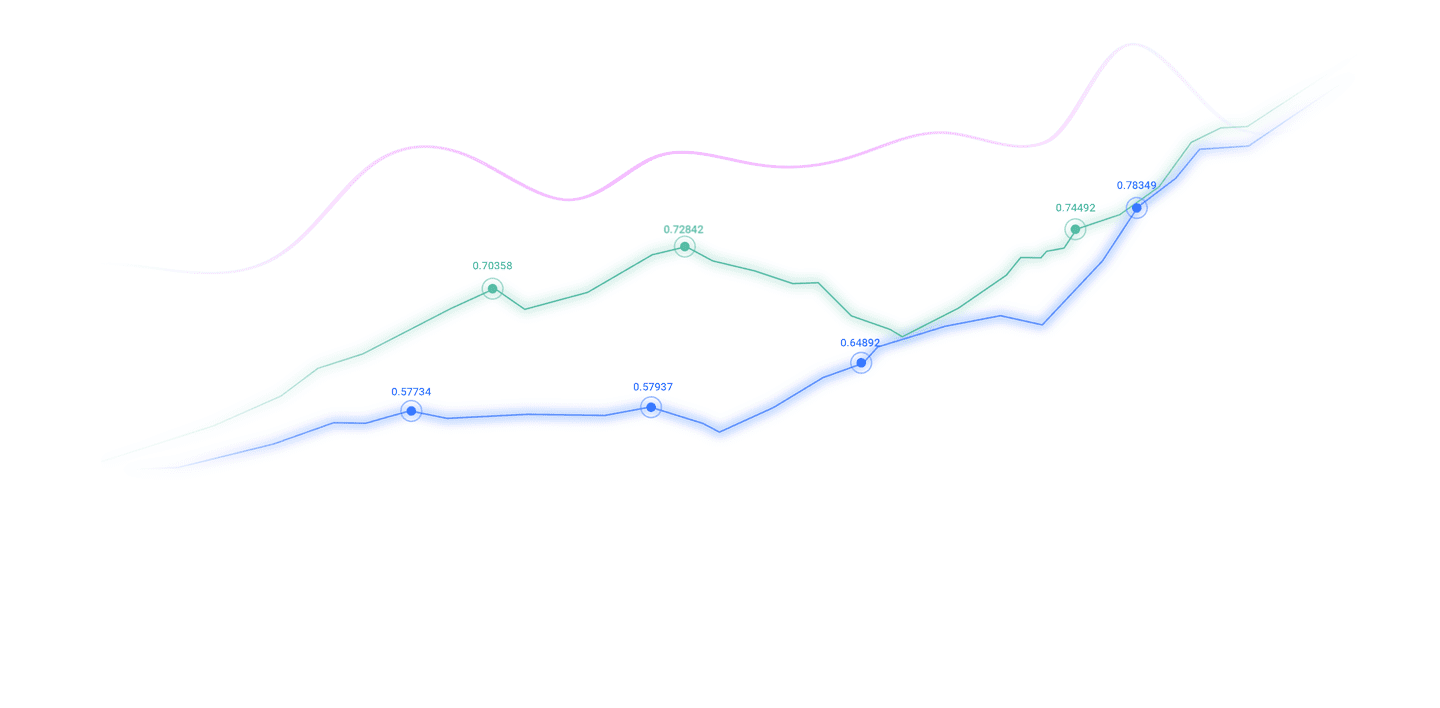Trusted by over 15 Million Traders
The Most Awarded Broker
for a Reason
CATEGORIES
News
- Japanese silver release eagle vs. Federal Reserve cut interest rates, will the y
- RBA releases minutes of meeting, AUDUSD's response is dull
- A collection of positive and negative news that affects the foreign exchange mar
- Fed's favorite inflation indicator supports interest rate cuts in September, Tru
- 9.2 Analysis of the price fluctuation trend of gold crude oil market and the lat
market analysis
A collection of good and bad news affecting the foreign exchange market
Wonderful introduction:
Love sometimes does not require the promise of eternal love, but it definitely needs meticulous care and greetings; love sometimes does not need the tragedy of Butterfly Lovers, but it definitely needs the tacit understanding and congeniality of the heart; love sometimes does not need the following of male and female, but it definitely needs the support and understanding of each other.
Hello everyone, today XM Forex will bring you "[XM Foreign Exchange Market Analysis]: A collection of good and bad news affecting the foreign exchange market." Hope this helps you! The original content is as follows:
1. The U.S. dollar: Good and bad are intertwined, and the shock pattern is difficult to break
Positive factors
The "hawk-dove balance" of the Federal Reserve's policy supports the U.S. dollar: Fed Governor Cook stated on the 4th that he will cut interest rates in December. "Depends on follow-up data," while warning that tariffs may keep inflation high, which echoes Goolsby's previous hawkish remarks of "warning of a rebound in inflation." Market expectations for the probability of an interest rate cut in December dropped from 67% to 62%, supporting the U.S. dollar index to fluctuate in the 99.5-100 range.
The suspension of balance sheet reduction releases a signal of easing liquidity: The Federal Reserve's decision to suspend the balance sheet reduction since December not only alleviated the market's concerns about liquidity tightening, but also did not release excessive easing signals. This "moderate turn" prevented the dollar from falling sharply.
Geo-hedging demand support: Ukraine’s attack on Russia’s Black Sea oil port triggered energy supply concerns, coupled with the weakness of the global manufacturing PMI, funds flowed to safe-haven assets such as the US dollar in the short term. The US dollar against the yen maintained a high above 154 in early trading on the 5th.
Negative factors
Debt pressure restricts policy space: U.S. federal debt exceeds 38 trillion US dollars, net interest expenses are close to defense expenditures, the Federal Reserve’s policy focus is tilted towards “maintaining debt stability”, and it is difficult to restart tightening due to limited independence, suppressing the credit of the US dollar in the long term.
Lack of momentum during the vacuum period of economic data: The United States delayed the release of many key data due to the government shutdown. The market is waiting for guidance on the non-farm employment data on the 6th. In the short term, the dollar lacks a clear catalyst to break through the 100 mark.
2. Euro: The weak benefits are hard to overcome the negative pressureh3>Positive factors
The European Central Bank's policy remains relatively stable: the European Central Bank kept interest rates unchanged in October. Although it did not release a hawkish signal, www.xmserving.compared with the Federal Reserve's two interest rate cuts this year, the policy differentiation gap has narrowed. On the 5th, the euro rose slightly by 0.012 against the New Zealand dollar and other www.xmserving.commodity currencies.
Energy supply concerns eased: OPEC+ slightly increased production by 137,000 barrels per day in December, which to some extent eased expectations of winter energy shortages in Europe, indirectly reduced the risk of economic downturn in the euro zone, and provided marginal support for the euro.
Negative factors
The weakness of economic fundamentals highlighted: the final value of the Eurozone manufacturing PMI in October was still below the boom-bust line, core inflation fell but was above the 2% target, and the risk of economic "stagflation" limited the European Bank's policy operation space. The euro fell to around 1.1490 against the US dollar in early trading on the 5th.
USD resilience and capital outflow pressure: Eurozone funds continue to flow into US dollar assets slightly, and the EURUSD fell below the key support of 1.15 on a technical basis, and the power of shorts has increased.
3. Sterling: Employment data drags down, policy prospects are unclear
Positive factors
Expectations of the Bank of England suspending interest rate cuts are rising: The market expects the Bank of England to maintain interest rates at 4% on November 7, breaking the previous quarterly interest rate cut pace. If the policy turns hawkish, it may provide rebound momentum for the pound.
The crosses received short-term support: on the 5th, the pound rose by 0.7232 against the Nepalese rupee and other emerging market currencies, partially hedging the downward pressure on the pound against the US dollar.
Negative factors
The job market continues to deteriorate: the UK's three-month ILO unemployment rate rose to a nearly three-year high of 4.8% in August. The weak labor market has exacerbated concerns about economic recession. The market is betting that the Bank of England may restart easing earlier than the European Central Bank.
Follow-up frictions after Brexit still exist: the differences between Britain and Europe on the trade arrangement in Northern Ireland have not been fully resolved, and the impact of energy price fluctuations on the manufacturing industry has caused the pound to maintain a low level of 1.1410 against the euro.
4. Japanese yen: The game between intervention expectations and policy differences
Positive factors
The risk of foreign exchange market intervention is heating up: the U.S. dollar is approaching the key mark of 155 against the yen. Officials from the Japanese Ministry of Finance reiterated on the 5th that they “pay close attention to exchange rate fluctuations.” The market is wary of intervention actions to limit the decline of the yen.
Marginal improvement in energy import costs: OPEC+ will suspend production increases in the first quarter of 2026, which may inhibit further rises in oil prices. As a crude oil importer, Japan's trade deficit pressure is expected to ease, indirectly supporting the yen.
Negative factors
The pattern of policy differences has not changed: the Bank of Japan still maintains a loose policy, and even if the Federal Reserve cuts interest rates, the interest rate difference between the two countries still exceeds 375 basis points. The demand for carry trades continues to suppress the Japanese yen. On the 5th, the Japanese yen fell by 0.00005931 against Samoa Tala.
Domestic economic recovery is weak: Japan’s core CPI growth fell back to 2.3% in the third quarter, and consumer spending increasedThe economy has been weak for a long time, and the central bank's policy shift lacks data support.
5. Canadian dollar: Oil price shock and central bank policy direction
Positive factors
The Bank of Canada suspended interest rate cuts: After www.xmserving.completing the fourth rate cut of the year in October, the bank made it clear that the current 2.25% interest rate is "roughly appropriate". The market expects no more interest rate cuts before March 2026, and the interest rate advantage supports the Canadian dollar.
The cross trading performance is divided: on the 5th, the Canadian dollar rose 0.1130 against the Ukrainian hryvnia, showing the allocation demand for the Canadian dollar by some emerging market funds.
Negative factors
Oil price shocks weaken support: WTI crude oil remains at $61.2 per barrel, down more than 15% from the year's high. The Canadian economy is highly dependent on energy exports, and weak oil prices suppress the Canadian dollar's rebound space.
The outlook for economic growth is bleak: the Bank of Canada lowered the GDP growth rate in 2025 to 1.2%. The decline in exports and business investment dragged down the economy. The Canadian dollar fell by 0.4496 against currencies such as the Djibouti franc.
6. Core tips for trading
Key data to focus on: The US non-farm employment data on the 6th is a key variable. If new jobs are lower than expected, it may strengthen the Fed's interest rate cut expectations, which will be negative for the US dollar and bullish for non-US currencies; otherwise, it may push the US dollar to break through the 100 mark.
Risk event warning: The first meeting of the OPEC+ Production Supervision www.xmserving.committee needs to focus on whether to introduce production capacity penalty measures. If the policy implementation is stronger than expected, rising oil prices may boost the Canadian dollar and suppress the Japanese yen.
Technical point reference: The EURUSD needs to pay attention to the support of 1.1480. The GBP/USD focuses on the 1.31 integer mark. The USD/JPY is wary of the 155 intervention line. If it breaks through the key points, it can increase its position.
The above content is all about "[XM Foreign Exchange Market Analysis]: Collection of good and bad news affecting the foreign exchange market". It is carefully www.xmserving.compiled and edited by the editor of XM Foreign Exchange. I hope it will be helpful to your trading! Thanks for the support!
Spring, summer, autumn and winter, every season is a beautiful scenery, and they all stay in my heart forever. Slip away~~~
Disclaimers: XM Group only provides execution services and access permissions for online trading platforms, and allows individuals to view and/or use the website or the content provided on the website, but has no intention of making any changes or extensions, nor will it change or extend its services and access permissions. All access and usage permissions will be subject to the following terms and conditions: (i) Terms and conditions; (ii) Risk warning; And (iii) a complete disclaimer. Please note that all information provided on the website is for general informational purposes only. In addition, the content of all XM online trading platforms does not constitute, and cannot be used for any unauthorized financial market trading invitations and/or invitations. Financial market transactions pose significant risks to your investment capital.
All materials published on online trading platforms are only intended for educational/informational purposes and do not include or should be considered for financial, investment tax, or trading related consulting and advice, or transaction price records, or any financial product or non invitation related trading offers or invitations.
All content provided by XM and third-party suppliers on this website, including opinions, news, research, analysis, prices, other information, and third-party website links, remains unchanged and is provided as general market commentary rather than investment advice. All materials published on online trading platforms are only for educational/informational purposes and do not include or should be considered as applicable to financial, investment tax, or trading related advice and recommendations, or transaction price records, or any financial product or non invitation related financial offers or invitations. Please ensure that you have read and fully understood the information on XM's non independent investment research tips and risk warnings. For more details, please click here


































































































